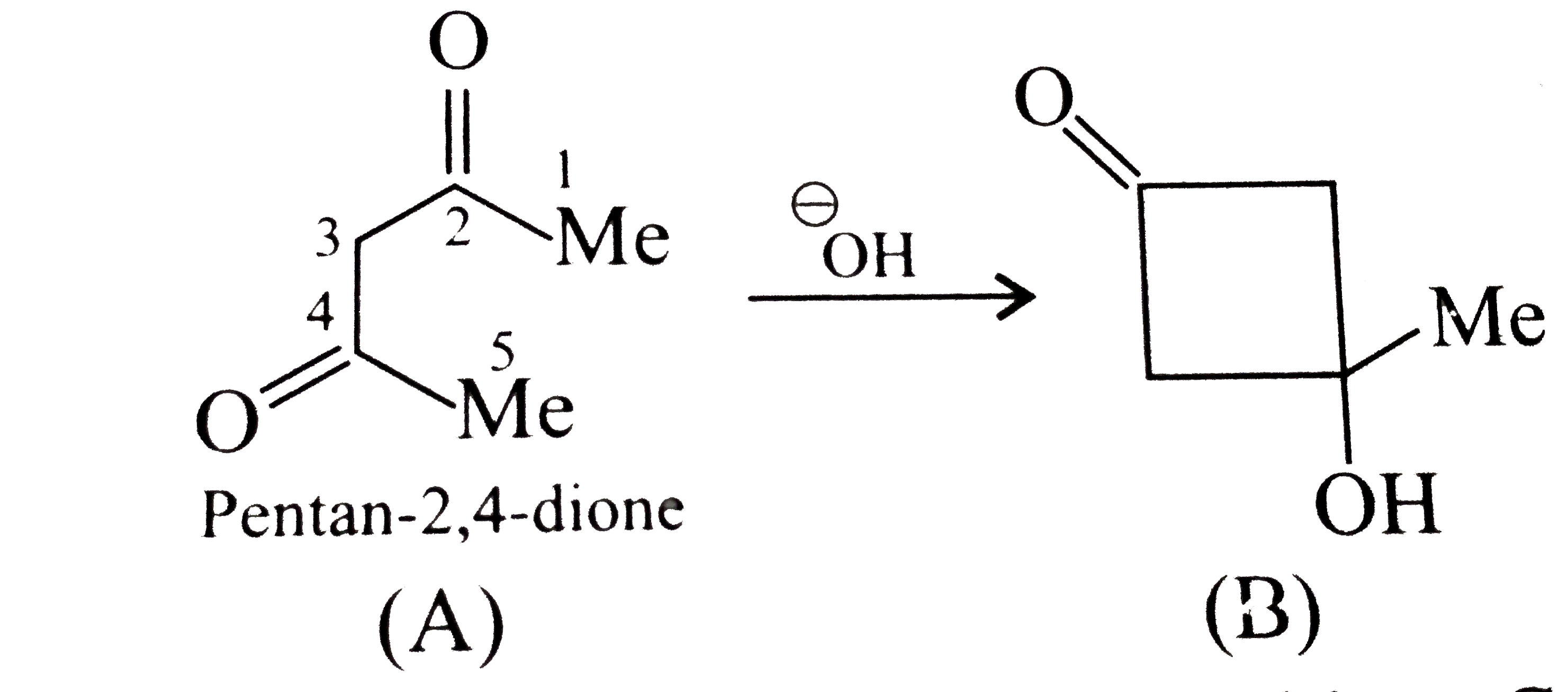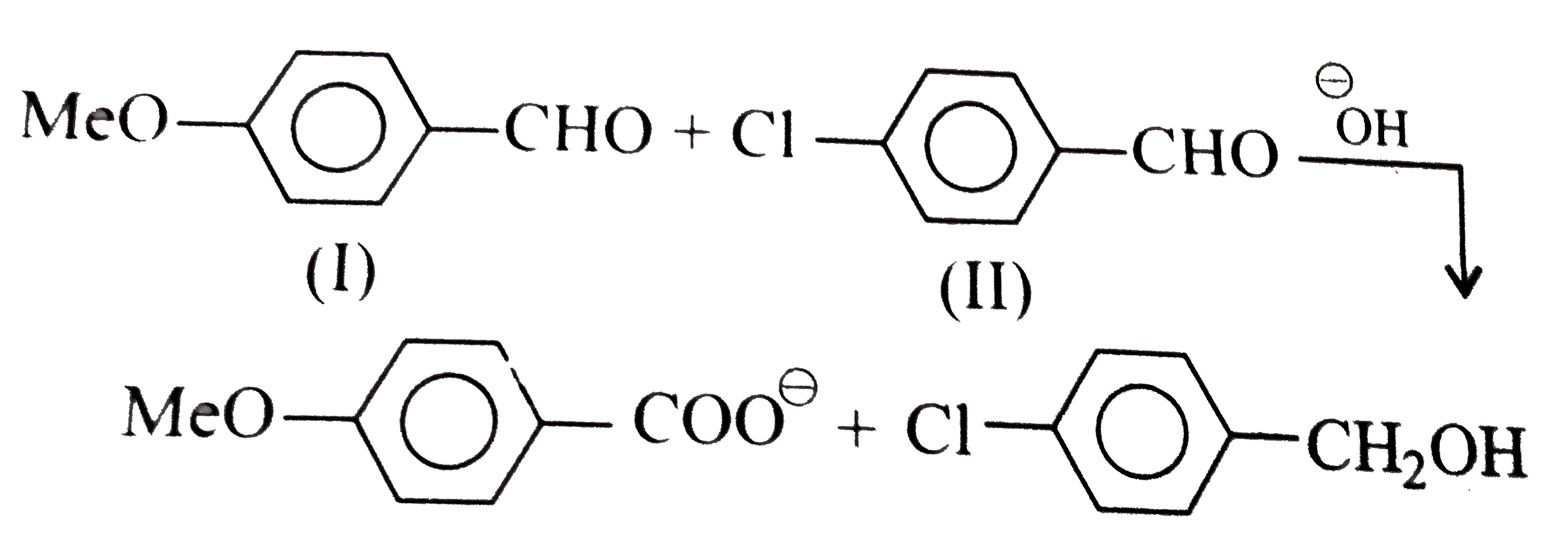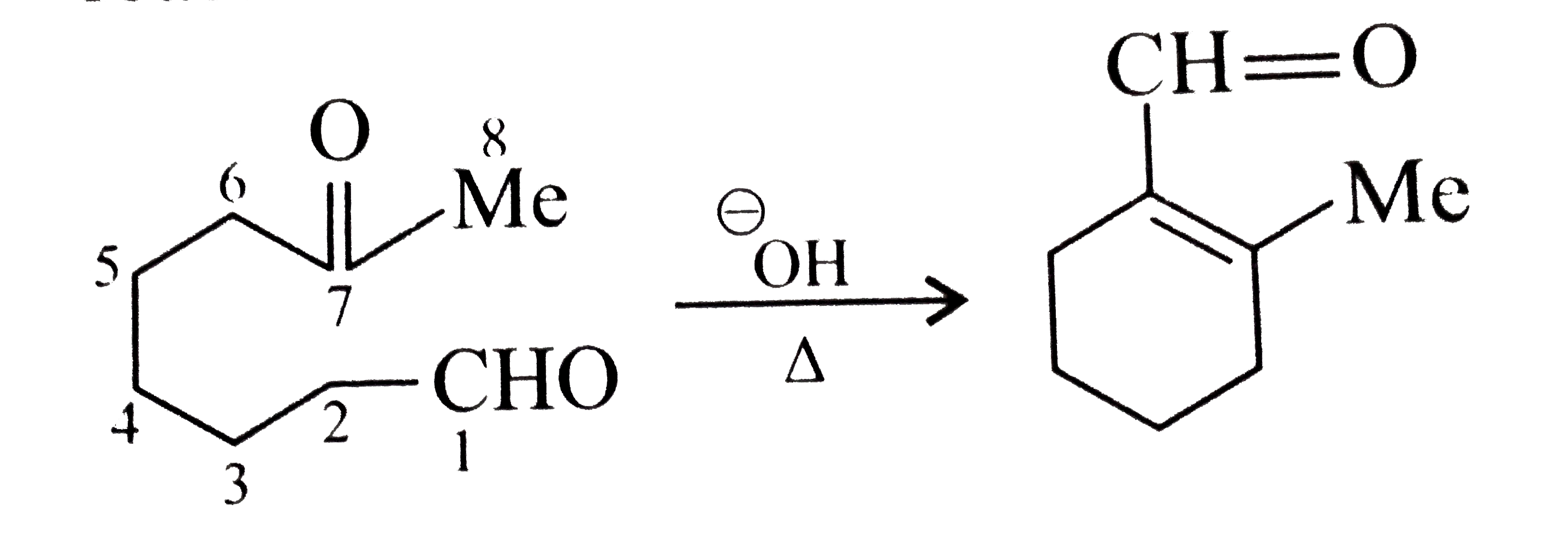Complete Solutions to Exercises Assertion-Reasoning of chapter ALIPHATIC AND AROMATIC ALDEHYDES AND KETONES of Class 12 book with complete answers and questions
| Class 12 | CHEMISTRY |
| Chapter | ALIPHATIC AND AROMATIC ALDEHYDES AND KETONES |
| CENGAGE CHEMISTRY | Exercises Assertion-Reasoning |
| Number Of Questions | 10 |
| Academic Year | 2023-24 |
Assertion (A): The following intramolecular aldol reaction occurs.

Reason (R ): The carbanion does not add to C-4 because a strained four-membered ring would result.03:30View SolutionAssertion (A): The equilibrium constant for cyanohydrin formation is `=10^(13)` times greater for cyclo-hexanone than for cyclophentanone.
Reason (R ): For a five-membered ring, reactions are more favourable when a ring C changes from `sp^(3)` to `sp^(2)` because eclipsing interactions are removed.04:43View SolutionAssertion (A): The following reaction occurs.

Reason (R ): Undergoes disproportionation reaction since the mobility of `alpha-H` atom is arrested by the steric effect of the two bulky methyl groups.04:23View SolutionAssertion (A): Pentan-2-one on reaction with `NaHSO_(3)` gives sodium bisulphite adduct product.
Reason (R ): `(C=O)` group of pentan-3-one is sterically hindered and nucleophile `SO_(3)^(2-)` is also of large size, so nucleophilic addition reaction does not occur.03:45View SolutionAssertion (A): The following reaction occurs.

Reason (R ): The semicarbazone of (A) (pentan-2-one) exists in two geometrical isomers.05:25View SolutionAssertion (A): The following cross Cannizzaro reaction occurs.

Reason (R ): Rate of reaction is:
Rate = `K["Aldehyde(I)"]["Aldehyde(II)"][overset(Θ)(OH)]` and bimolecular.07:21View SolutionAssertion (A): The following intramolecular aldol reaction occurs.

Reason (R ): `(CHO)` is a better acceptor than `(C==O)`.05:30View SolutionAssertion (A): The following reaction occurs.

Reason (R ): The product is a stable cylic hemiacetal formed by the anion of (A) product of centre is formed, thus (B) is racemate.View SolutionAssertion (A): The reaction of 1 mol each of `(MeCH==O)` with glycerol `(overset(1)underset(OH)underset(|)CH_(2)-overset(2)underset(OH)underset(|)CH-overset(3)underset(OH)underset(|)CH_(2))` gives six separable isomers.
Reason (R ): Acetaldehydes react with 1-and 2-OH group of glycerol to form five-membered cyclic acetal. In the ring closure, two chiral centres are formed and thus we have pairs of enantiomers: cis and trans.
When acetaldehydes react with 1-and 3-OH groups, a six membered cyclic acetal is formed giving two disatereomeric products (cis and trans). These diastereomers are achiral.07:28View SolutionAssertion (A): The reaction MeCOCI with `MeCuLi` or `Me_(2)Cd` gives actone but with `MeMgBr` a `3^(@)` alcohol `(Me_(2)C-OH)` is much more reactive. `Me_(2)CuLi` or `Me_(2)Cd` does not react by nucleophilic addition reaction.
03:31View Solution
Exercises Assertion-Reasoning questions and complete solutions for chapter ALIPHATIC AND AROMATIC ALDEHYDES AND KETONES of CENGAGE CHEMISTRY (HINGLISH) of Class 12
All Exercises from CENGAGE CHEMISTRY Class 12 CHEMISTRY ALIPHATIC AND AROMATIC ALDEHYDES AND KETONES
- Archives Fill In Theblanks
- Archives Linked Comprehension
- Archives Multiple Correct
- Archives Objective
- Archives Subjective
- Archives True And False
- Exercises Assertion-Reasoning
- Exercises Concept Application
- Exercises Linked Comprehension
- Exercises Multiple Correct
- Exercises Single Correct
- Exercises Subjective
- Illustration
- Solved Examples
